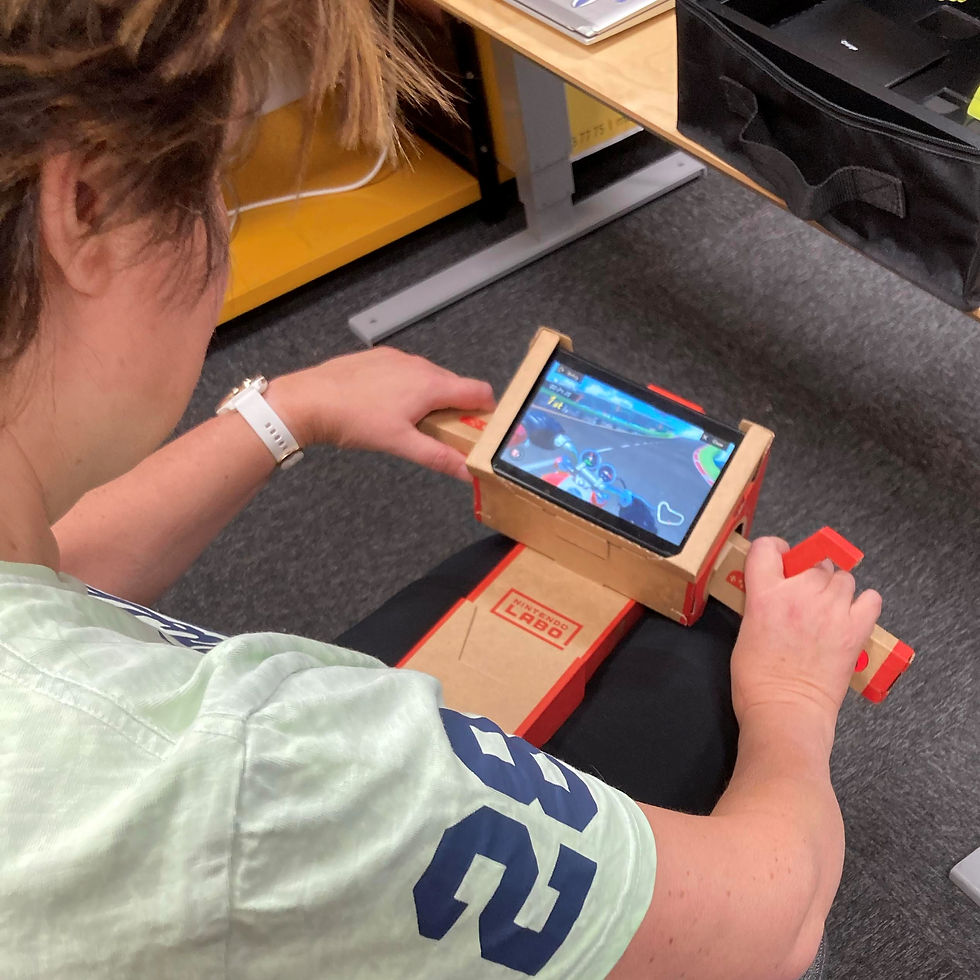Mainstream tangible and haptic technology for XR
- The ABILITY Team
- 13 hours ago
- 3 min read
Two researchers from Ability visited the XR Lab at Ericsson Research, Lund, Sweden to try out and discuss haptic tech for XR (eXtended reality). The setups in question were:
bHaptics Tactsuit x40 vest, gloves and arm bands with Meta Quest 3 in demo games for assembling and shooting
weart TouchDIVER haptic glove G1 with Meta Quest 3 in demo environment with different shapes, surfaces and temperatures
Nintendo Switch with Nintendo Labo motorcycle setup and game
The devices all work in different ways and have different strengths and weaknesses. Taken together, the experiences described below show how much of a challenge realistic haptic experiences in augmented/extended/virtual reality still are. With careful design and appropriate use cases the tested devices have potential, but the road to touch experiences that are like touching a real physical object may still be long. However, already today’s devices could be possible to put to better use for persons with visual impairments with tailored applications. Moreover, there seems to be a need for research and development that focuses on making the haptic experience the best it can be on its own, not just as an effect to an elaborate visual design.
The bHaptics body setup uses vibration, is responsive, and has good visual / haptic coupling. Interaction wise, the demo environments in question focused on directed feedback and cool effects and used haptics less to guide the user or to give a coherent experience. For example, there were only certain elements in the scene that provided haptic feedback. But the hardware offers some interesting possibilities. The number of vibrators that are spread out over the torso, hands and arms could potentially provide additional information about virtual environments also for users with visual impairments.
The Weart glove feels more like a prototype, the one tried out had substantial problems with lag for haptic feedback. For example, your fingers would visually pass through a surface before the haptic feedback was felt. An impressive feature was the temperature feedback, which was very responsive. In the environment there was a virtual burner, and while putting the finger in a real burner would have caused injuries, the heat felt through the device was safe, it was still hot enough to feel real. Temperature is a less well investigated type of feedback, and it is interesting to explore what it can be used for.
Nintendo Labo are “toys” one can build with cardboard, and it is a nice illustration of how a smaller device with a screen can be built into a frame making it more tangible. The cardboard shell connects to the buttons and joystick of the Switch. In the motorcycle driving game, the steering and speed was controlled physically by turning the handles and tilting the device. Unfortunately, this game didn’t provide and vibration feedback, which would have made the experience more immersive.






Comments